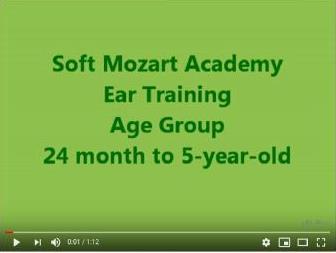Preparatory A (from 2+). Lesson 30

Your FREE Demo version is here
Your full version access is here
Did you notice how practicing music with your child adds more organization and power in your daily life?
I want to share my thoughts with you about colors and images in learning music. So, here is our Pedagogy class today:
Which Types of Pictures Teach Music, and Which Types Do Not
- Lewis Carrol’s Alice in Wonderland
Kids love bright colors and engaging pictures, so many educators try to use them to make learning more interesting and exciting. This is a completely understandable and justified trend.
However, it is important to understand the goals of the use of music graphics. They can be decorative, and they can be educational. Decorative graphics use colors and shapes to make musical information more interesting and conspicuous to your child. Educational graphics, on the other hand, are logical guides that help the child in his understanding of music grammar and expression.
Fairy-tale characters, drawings of music, and spontaneously colored keys meant to “cheer the eyes” are all attempts to call forth interest and take up time during a music lesson. However, you already noticed that if your child is submerged in the world of sounds without hands-on experience of music-making, no graphic, no matter how inventive, will maintain his live interest in the language of music. No “happy pictures” will pike a person’s interest in the same way that a pair of simple, yet familiar skills in playing an instrument will. This means singing by notes, and reading and playing sheet music.
This is exactly why we start listening masterpieces with playing them on piano!
The entire family on my father’s side was fluent in Finnish, and I often listened to them converse with each other without any idea of what they were saying. As a child I was often lectured about the beauty of Finland, and showed a ton of photos and films from the country. But Finnish didn’t ever become more comprehensible nor accessible to me. Nobody taught me to speak it! With Russian, Ukrainian, and English, it’s a completely different story. I can freely communicate in these languages, and thus can truly comprehend their uniqueness and beauty.
Let’s return to helpful graphics, and examine their application in computer games. There are a lot of computer programs out there that teach the student about music. They conceal the same old ineffective, traditional methods in colorful graphics and animation, without any real change in essence. Furthermore, they ignore the vocal nature of hearing development. One can write about the exciting adventures of the different notes, and even think up witty names for the heroes of the story, but this is all a wasted effort. A miracle won’t happen; pictures won’t help the music perception without the help of the voice.
We practice the right way to do it: to have you and your child sound out of the names of notes with the help of a drawing. A picture with a proper representation of note’s phonetic name can be used as a valuable guide in music reading. For example, a picture of a door we used for “Do,” a rain cloud for “Re,” and so on. In this case, the pictures act as mediators between the note and the voice, and in turn between the voice and the instrument. Many teachers use this method with great success. Place a picture on the music staff and its corresponding keys, and the sound of the key will help the voice to find the note, and its picture will tie the voice, symbol on the staff and tone all together. This graphic method combines the hearing, muscles, vision, and abstract representations all into one system. This way, the graphic becomes a helping guide in the development of a musical mind. This is an example of an actively educative approach that helps to teach music regardless of the presence of musical aptitude.
...
Keep working on all piano exercises
...
 GENTLE PIANO
GENTLE PIANO
Keep practicing the 8 notes of the Bach's Invention in Do (C) Major
Piano experience – Favorite Classics Primer – Rubinstein, Melody - try L and R hands.
Don't forget to practice all other exercises, modules and piano pieces! There are three times in any lessons: present, past and future. Learn no combine the three, but don't push!
....
Sincerely yours, Hellene Hiner.
Video sample:
PS
All the lesson plans:
for 24 months to 3 year old
3 year old to 5 year old
5+ year old
Intensive Course for Adults-beginners
Always check here, if there any recital in the progress! You and your child will benefit a lot from the participation.
Your place to start your Diary is here


